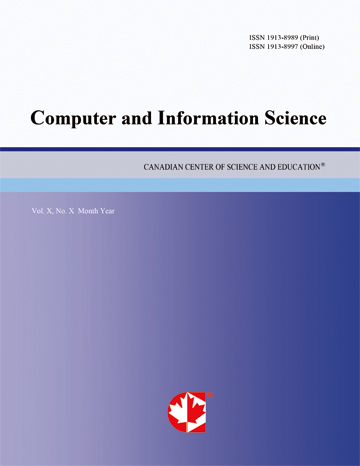A Novel Approach for Robust Perceptual Image Hashing
- Azhar Hadmi
- Awatif Rouijel
Abstract
Perceptual image hashing system generates a short signature called perceptual hash attached to an image before transmission and acts as side information for analyzing the trustworthiness of the received image. In this paper, we propose a novel approach to improve robustness for perceptual image hashing scheme for generating a perceptual hash that should be resistant to content-preserving manipulations, such as JPEG compression and Additive white Gaussian noise (AWGN) also should differentiate the maliciously tampered image and its original version. Our algorithm first constructs a robust image, derived from the original input by analyzing the stability of the extracted features and improving their robustness. From the robust image, which does perceptually resemble the original input, we further extract the final robust features. Next, robust features are suitably quantized allowing the generation of the final perceptual hash using the cryptographic hash function SHA1. The main idea of this paper is to transform the original image into a more robust one that allows the extraction of robust features. Generation of the robust image turns out be quite important since it introduces further robustness to the perceptual image hashing system. The paper can be seen as an attempt to propose a general methodology for more robust perceptual image hashing. The experimental results presented in this paper reveal that the proposed scheme offers good robustness against JPEG compression and Additive white Gaussian noise.
- Full Text:
 PDF
PDF
- DOI:10.5539/cis.v14n3p38
Journal Metrics
WJCI (2022): 0.636
Impact Factor 2022 (by WJCI): 0.419
h-index (January 2024): 43
i10-index (January 2024): 193
h5-index (January 2024): N/A
h5-median(January 2024): N/A
( The data was calculated based on Google Scholar Citations. Click Here to Learn More. )
Index
- Academic Journals Database
- BASE (Bielefeld Academic Search Engine)
- CiteFactor
- CNKI Scholar
- COPAC
- CrossRef
- DBLP (2008-2019)
- EBSCOhost
- EuroPub Database
- Excellence in Research for Australia (ERA)
- Genamics JournalSeek
- Google Scholar
- Harvard Library
- Infotrieve
- LOCKSS
- Mendeley
- PKP Open Archives Harvester
- Publons
- ResearchGate
- Scilit
- SHERPA/RoMEO
- Standard Periodical Directory
- The Index of Information Systems Journals
- The Keepers Registry
- UCR Library
- Universe Digital Library
- WJCI Report
- WorldCat
Contact
- Chris LeeEditorial Assistant
- cis@ccsenet.org
